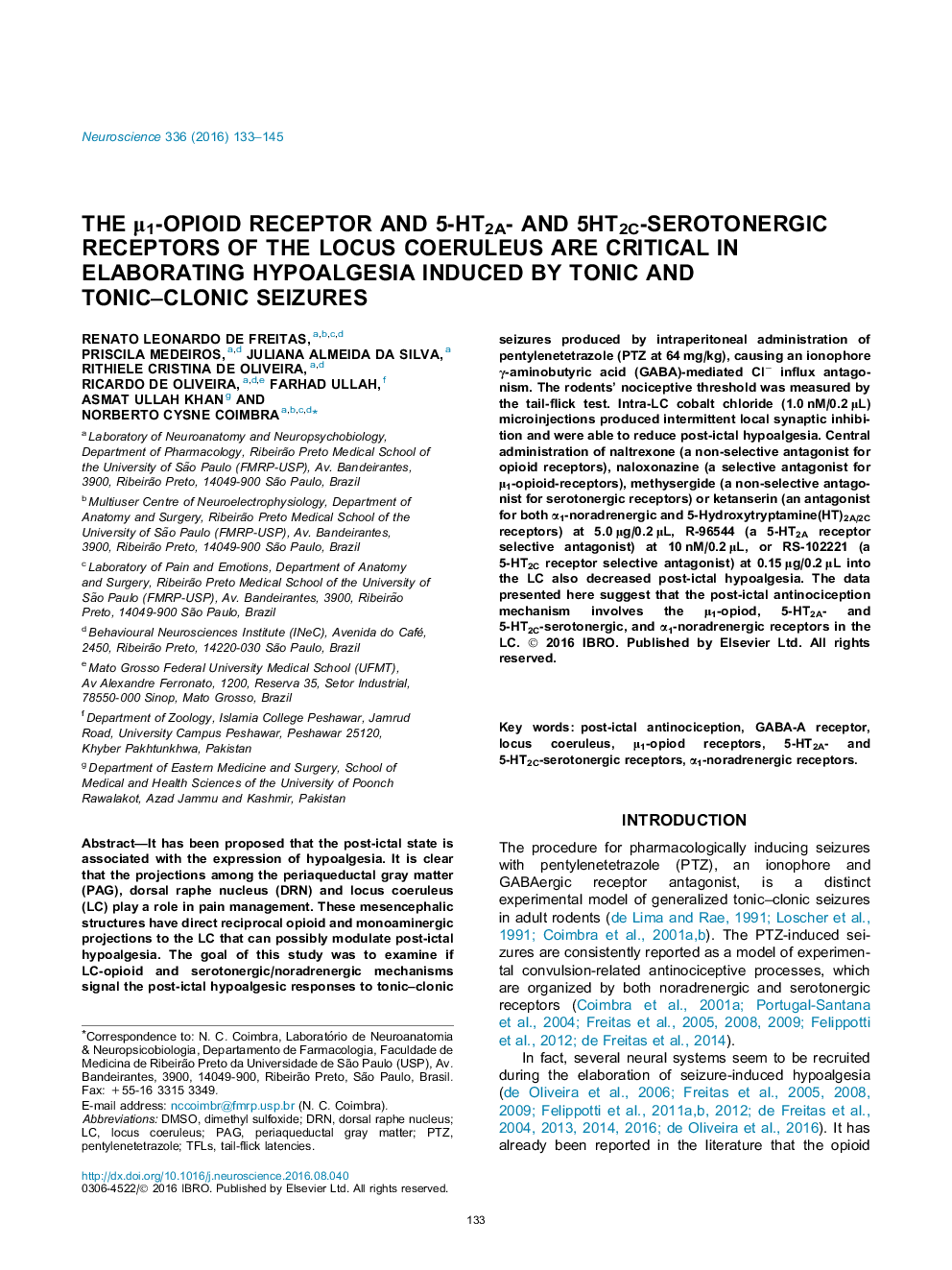| Article ID | Journal | Published Year | Pages | File Type |
|---|---|---|---|---|
| 4337253 | Neuroscience | 2016 | 13 Pages |
•Peripheral blockade of GABAA receptors evoke tonic–clonic seizures.•Seizing animals display antinociceptive process.•Transitory synaptic blockade into the LC decreases post-ictal antinociception.•LC μ1-Opioid receptors mediate post-ictal antinociception.•LC 5-HT2A- and 5-HT2C-serotonergic receptors modulate post-ictal antinociception.
It has been proposed that the post-ictal state is associated with the expression of hypoalgesia. It is clear that the projections among the periaqueductal gray matter (PAG), dorsal raphe nucleus (DRN) and locus coeruleus (LC) play a role in pain management. These mesencephalic structures have direct reciprocal opioid and monoaminergic projections to the LC that can possibly modulate post-ictal hypoalgesia. The goal of this study was to examine if LC-opioid and serotonergic/noradrenergic mechanisms signal the post-ictal hypoalgesic responses to tonic–clonic seizures produced by intraperitoneal administration of pentylenetetrazole (PTZ at 64 mg/kg), causing an ionophore γ-aminobutyric acid (GABA)-mediated Cl− influx antagonism. The rodents’ nociceptive threshold was measured by the tail-flick test. Intra-LC cobalt chloride (1.0 nM/0.2 μL) microinjections produced intermittent local synaptic inhibition and were able to reduce post-ictal hypoalgesia. Central administration of naltrexone (a non-selective antagonist for opioid receptors), naloxonazine (a selective antagonist for μ1-opioid-receptors), methysergide (a non-selective antagonist for serotonergic receptors) or ketanserin (an antagonist for both α1-noradrenergic and 5-Hydroxytryptamine(HT)2A/2C receptors) at 5.0 μg/0.2 μL, R-96544 (a 5-HT2A receptor selective antagonist) at 10 nM/0.2 μL, or RS-102221 (a 5-HT2C receptor selective antagonist) at 0.15 μg/0.2 μL into the LC also decreased post-ictal hypoalgesia. The data presented here suggest that the post-ictal antinociception mechanism involves the μ1-opiod, 5-HT2A- and 5-HT2C-serotonergic, and α1-noradrenergic receptors in the LC.
